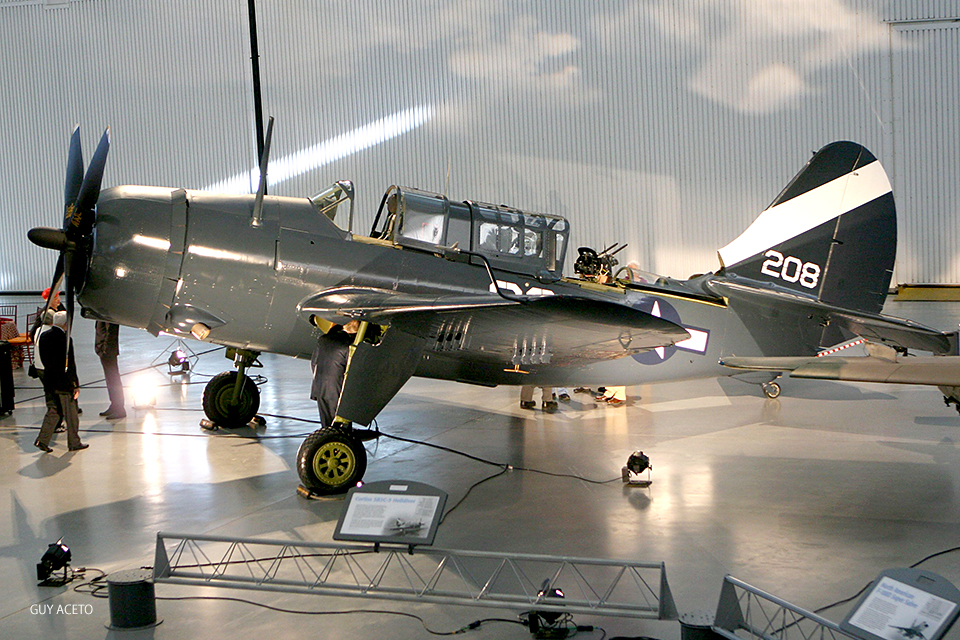The first airplane to emerge from the new restoration hangar at the Smithsonian National Air and Space Museum’s Udvar-Hazy Center was unveiled to the public on April 1. The Curtiss SB2C-5 Helldiver brings the number of historic aircraft on display at the expansive northern Virginia center to 173.
As America’s last purpose-built dive bomber and Curtiss’ last significant combat aircraft, the Helldiver was considered a prime candidate for the first restoration effort at the new facility. It didn’t hurt that the museum’s example was already in pretty good shape, allowing the team to complete the restoration in little more than a year, or that former NASM director Donald D. Engen had flown Helldivers in World War II.
The museum’s SB2C-5 was delivered to the U.S. Navy in May 1945, and never saw combat. Assigned to bombing squadron VB-92, the “Battling Beasts,” it flew from the carrier Lexington over the western Pacific and occupied Japan from September through December 1945, then served in various Navy units until 1948. The museum took possession of the dive bomber in 1960, and from 1975 to 2003 it was loaned to the National Naval Aviation Museum in Pensacola, Fla.
One of seven surviving SB2Cs, the Smithsonian’s example is the most authentic Helldiver in the world, according to museum curator Jeremy Kinney. The dive bomber has been repainted in the markings it wore during the early phase of its assignment to VB-92, with a broad white diagonal bar on the vertical stabilizer and wingtips. Kinney said the aircraft’s overall “glossy sea blue” coat was matched to original paint found on its underwing hardpoints. Although most of the airplane is original, the “gun truck” mount for the backseater’s twin .30-caliber machine guns had to be built from scratch using factory drawings and a sample from the museum’s Douglas SBD Dauntless, which used the same mount. No detail was too small to escape the restoration team’s attention, down to the wood wedges in the wheel wells that kept the tires from spinning when retracted: Curtiss manuals specified that they be unpainted.
The 48,000-square-foot Mary Baker Engen Restoration Hangar can house up to seven aircraft projects at a time, and currently has a staff of 14. The hangar is ringed with fabric, chemical, machine, wood, welding, paint and other specialty shops. Kinney revealed that the next project they’re undertaking is a restoration of the celebrated Martin B-26 Marauder Flak-Bait, which flew more than 200 missions in World War II. A portion of its fuselage has been on display at the downtown D.C. museum for years, but this will be the first time the bomber has been displayed in full since the Army Air Forces retired it at war’s end.





